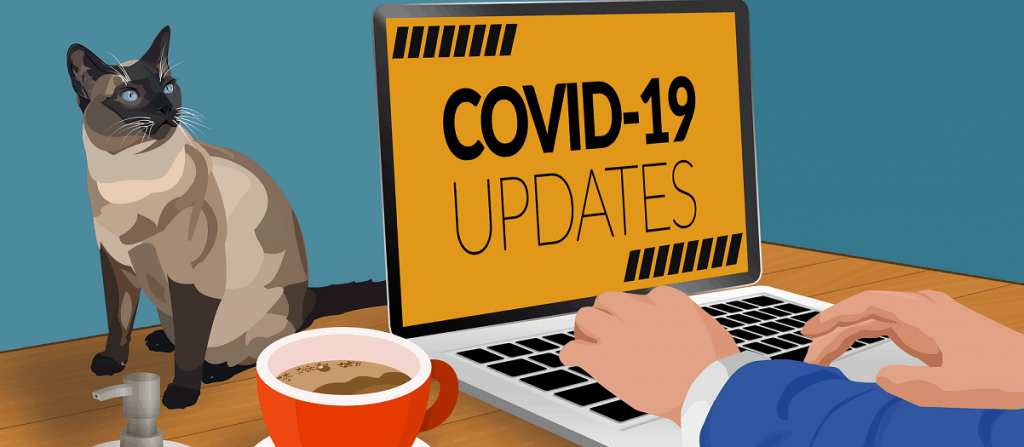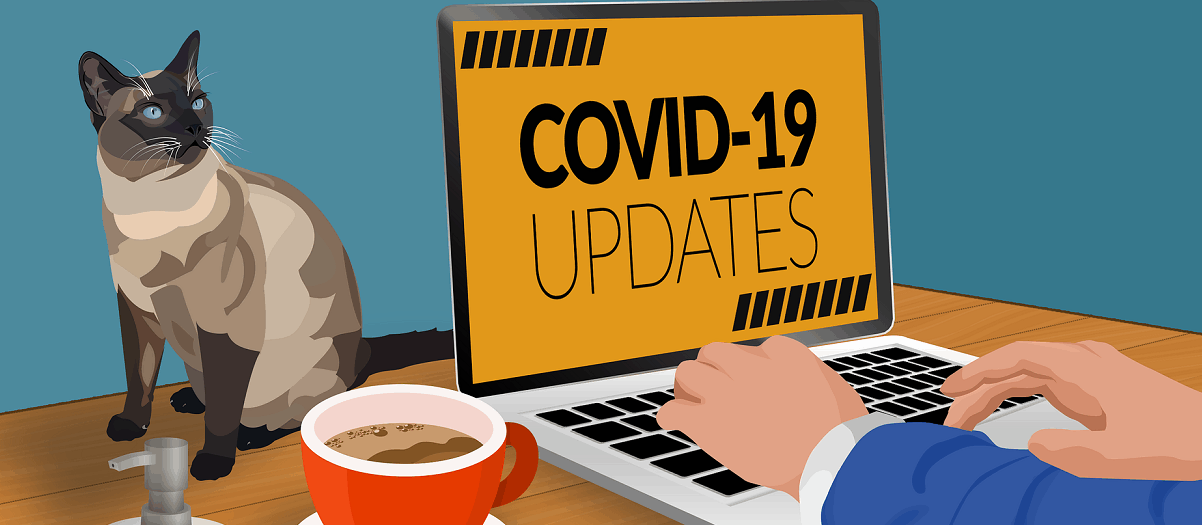On hold messages represent your business’ personality. The COVID-19 pandemic has changed many aspects of your life and how your business operates. Despite this, marketing professionals like yourself still need to uphold your brand’s reliability, availability, and reputation.
As a marketing manager, you must ensure that all voicemails are up to date. Prospects must feel that the business they’ve called is running smoothly despite the restrictions imposed by lockdowns and quarantines. Your on-hold messages should still reflect changes in business order and process availability.
If staff are working remotely, the customer experience should not be impacted in terms of phone recordings heard and how calls are diverted or transferred to them.
Many audio service providers like Evolved Sound can craft on-hold messages based on their client’s marketing environment and organisational objectives. Professional phone recordings are integral in operating a general business telephone system or a full-scale Contact Center as a Service (CCaaS).
Update your Phone Recordings when Remote Working

In truth, customers don’t like to be put on hold. According to a report released by Software Advice in 2017, sixty-three percent of customers prefer answering to an on-hold message over waiting in silence. The survey polled more than 1,000 consumers. The result suggests that companies should consider adding telephone on hold messages to their communication system.
Sixty seconds is all it takes for a prospect to hang-up, as stated in Velaro’s 2012 survey. If potential customers are forced to wait in silence, they may turn to another provider. When this happens, you lose a chance of turning a caller into a paying consumer. With on-hold messaging, providing your phone system supports this a caller can choose between receiving a callback, and continuing to wait while hearing tailored on-hold music.
Both options encourage the prospect to remain on the line. The personalised message should tell the caller that an agent could speak to him/her soon. You may also include prompts. These features ensure that the company values the call.
How to Update Your On-Hold Messages

In creating audio recordings, intentionality, creating rapport, and establishing a resolution are important. The information you share with prospects and customers when they call your business must have the ability to engage, inform, and sell.
Those are only possible if the recording resonates and connects with callers. The on-hold message should also solve or provide clarification about issues in trading hours, delivery processes, and delays in orders, if any.
In addition to that, voice response prompts should be interactive. They should allow callers to navigate a phone system before being connected to staff member. Remember that callers hate to wait in silence, and due to the pandemic, waiting times could be much longer than usual.
By integrating interactive voice recordings you can present ways that will enable callers to know more about your brand. This is possible while they’re being routed to various team members.
Workflows may have changed. Even so, your business is still up and running.
Let your customers know about this and the following:
- New trading hours
- Possible wait times
- Updated prices of products and services
- Solutions to website issues/glitches
- Service availability
- Price quotes
- The goals of your brand
- Answers to FAQs
While your callers are waiting, make them listen to interactive on-hold messages so that they won’t hang-up. How can you do all of these? How should you update your phone recordings?
Take a look at the following marketing tips to have your questions answered.
• Be empathetic
The most engaging and interesting phone recordings should have updated content and should be seasonally relevant. In these dire times—in times of lockdowns and quarantines—your phone recordings should be empathetic with your callers.
Often, people who seek service providers are already dealing with a technical issue that has left them frustrated. Accordingly, your on-hold messages should express sentiment sincerely and clearly. Doing so can support marketing activities, such as up-selling, lead generation, and price justification.
Turn prospects into new paying clients by winning them with customer service empathy. Over the phone, pre-recorded greetings and messages should build rapport with callers. This is important when you’re trying to increase sales or provide a good service.
Whether customers call about a complaint or problem, your audio recordings should make them feel understood, heard, and respected. By acknowledging their concerns, you’re showing empathy and understanding. Both are essential in providing great service and communication.
Think of your customer’s problems. Why would they call you? Do they need a price quote? Do they need help with using your product? Even before they’re connected to a representative, you should already provide possible solutions to their problems.
• Integrate phone prompts in your communication system
Many organisations are closing down because of the COVID-19 pandemic. Nowadays, many are modifying their services and business operations to cope. Operators, marketing experts, and VOIP providers must communicate with callers efficiently during the crisis so that their business could recover after.
While health and safety are indeed the priority, you must also consider how the pandemic affects your brand’s reputation. Foremost, customers would want to know how you can deliver great service in these dire times.
When it comes to communicating with customers remotely, you can use phone prompts in providing answers to commonly asked questions.
Interactive voice responses help callers in looking for immediate solutions. While a customer is navigating through the phone menu, the call can be routed to the best point person who can resolve the issue. This reduces the frustration of the customer and frees live operators from handling specialised issues and answering FAQs.
IVR, when combined with text-to-speech, helps callers find valuable information without connecting to a representative. When the number of available live agents is limited, audio recordings and prompts can help in providing instructional messages and information about schedules and account balances.
Moreover, an automated telephone system can promise callback during working hours or route customers to department voicemails.
• Ensure that your voicemails are updated
COVID-19 is limiting the capabilities of businesses. Most restaurants and fast-food chains can only provide take-outs and are restricting dine-ins. Agencies, retail stores, theme parks, and other non-essential service providers have closed down. Their owners are monitoring everyday news. The same can be said to your customers and prospects.
Most of them monitor the daily news. Hence, they’re aware of the latest events in their hometown and nearby areas. If security is tight, they may question your business’ capability to fulfil orders on time. As new data and news become available, you have to update your voicemails and prompts.
For instance, you could include audio recordings about event cancellations or changes in working hours. Direct prospects to your website for more information. You may also provide a guide for temporary protocols during the outbreak.
Foremost, don’t just integrate a script that only answers their questions. Instead, the IVR message should be able to relate to your client’s predicament.
What will you do if the customer needs a product urgently, but delivery was delayed? Of course, you’ve got to reassure the caller that you’re spending time to handle the issue. Be transparent; tell them about the measures you’re taking.
• Be transparent with your clients
Almost everyone is facing this crisis brought by the COVID-19 pandemic. Even though you’re operating your business quite well amidst everything that is happening, you don’t have total control over delivery processes. Orders can be delayed, and trading hours can change.
In such cases, it’s best to tell your clients what’s causing the delay through audio recordings. Is it because you can’t send the package to the inbound facility? Can you really ship to his/her area? To uphold your brand’s reputation, tell customers as soon as possible if you can’t ship their orders. Add such a script in your phone communication process if possible.
If they want to track the status of their package, you can either connect them to the assigned staff member. Or, you can provide prompts and options for waiting or requesting a refund.
As long as you can communicate your sentiments and intentions effectively, customers can empathise with your brand. They know that everyone is in the same boat.
• Using cloud technology
As a manager, you shouldn’t overlook the importance of phone recordings in implementing integrated communications strategies. In doing so, always use the latest on-hold technology for providing information and services to callers.
With a cloud phone system, you can help your employees set-up a workspace at their home without losing access to important business systems, like a virtual phone system. If you’re already doing this, then you can reroute phone extensions. This allows you and your team members to take calls from home, and serve customers while minimising health risks.
Conclusion

So far, the end date for the pandemic is still not in sight. Nevertheless, your business must continue to run. You have to prepare for possible changes and take appropriate actions. Make sure that your messages are relevant to the “new normal” that could affect your brand’s customer base.
When your customers are put on hold, and all they hear is a beeping sound, they may hang up. For your business to prosper during and after a crisis, let an audio marketing service provider tailor the right on-hold messages for your business.

